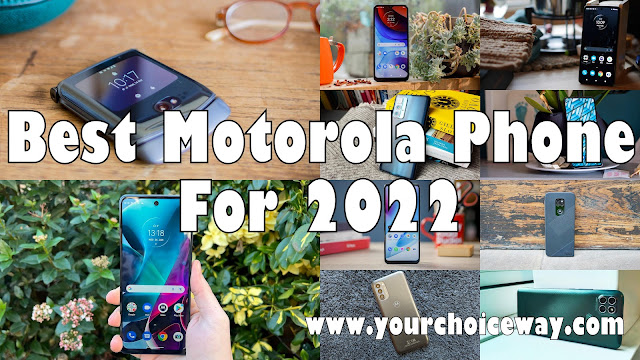The Moto G10 picks up where the G9 left off, squeezing in all the essentials at a budget pricetag of £129.99. But is it worth it?
Should I Buy The Motorola Moto G10?
Pros
- Great battery life
- Budget friendly
Cons
- Laggy performance
- Poor cameras
- Mediocre display
Our Verdict
Price When Reviewed
- £129.99
Motorola expands its G series with the Moto G10, which launched alongside the Moto G30. The series marks Motorola's refreshed efforts for a clearer naming convention, where a higher number implies stronger performance.
But will this ring true for the G10 as a step up from the G9 phones?
Both the £159.99 G9 Play and £179.99 G9 Power packed excellent value for money, given their modest price tags. But how will the even cheaper G10 fare? Let's find out.
Not much has changed when it comes to the G10's design compared to the G9 series: plastic body, dewdrop camera, rear fingerprint scanner – it's all the same. Yes, it's predictable, but in a forgivable "if it ain't broke, don't fix it" way.
Motorola recycles the plastic aesthetic of the G9 series – but instead of the Play's pebbly smooth back, you get the shimmery matte sheen of the Power, now with a rippled wave effect. The model I reviewed came in Aurora Grey, but you can also pick it up in Sakura Pearl.
The feel of the phone is virtually identical to its predecessors. Like the G9 Play, the G10 weighs 200g and measures 165.22 x 75.73 x 9.19mm – a difference so marginal to the Play's 165.21×75.73×9.18mm measurements that it's unnoticeable to the eye. You get the same, comfortable ease of one-handed use.
The G10 charges via USB-C and supports Bluetooth 5.0, dual-band WiFi and NFC. And like the G9 series, a dedicated Google Assistant button sits above the volume rocker. You also get a trusty 3.5mm headphone jack.
I was disappointed to see the G10's 6.5in display wasn't as punchy as the G9 Power's. In fact, the G10's screen matches the G9 Play's 1600x720 HD+ resolution. Both handsets also use budget IPS TFT display technology.
The G10's screen isn't all terrible, though. To match the criticism I had towards the G9 Play: it just lacks that satisfying richness and detail you might find in a more refined display. But that's not necessarily more expensive.
Both the Realme 6 and Realme 7, which use IPS LCD panels, offer Full HD+ resolution (that's 2400x1080) and excellent 90Hz refresh rates for around £200 or less. The Realme 7 costs £179.99.
Improved Cameras
Cameras were the Achilles heel in both of the G9 phones I reviewed. The good news is Motorola has finally upgraded the cameras with the G10. It's not an earth-shattering improvement, but I'll give credit where it's due.
The rear camera setup consists of a 48Mp main sensor, along with a 2Mp macro and 2Mp depth – all specs we saw on the G9 Play. One key change, however, is a new 8Mp ultra-wide sensor; a nice boost if you want to snap a skyline or outdoor vista.
The level of detail in this shot of the London Eye (below) really surprised me. It had much more depth compared to anything the G9 Power or Play produced. You do get a bit of warping towards the edges though, as you can see in the boat.
It helps to have a strong source of light when shooting with the G10 though, as lowlight photos continue to lose definition. In the shot of the setting sun, it's hard to distinguish darker areas of the frame, with the trees mixing completely into the background.
While the G10 name might suggest an upgrade from the G9, especially under Motorola's new naming convention, it isn't. In fact, unlike the G9 Play and G9 Power which both use the mid-range Snapdragon 662, the G10 relies on the low-end Snapdragon 460.
While this cuts down costs, you also get a slower phone, which you can see in the Geekbench performance benchmark below. I found that the G10 took time to start up and lagged at times during use. It wasn't offputtingly slow, but just a sliver slower than you might like.
Whether this is a problem depends on how patient you are and how you aim to use your phone. If it's primarily for light web browsing and Whatsapp messaging, you'll be fine, but for anything more demanding, like gaming, you'll want more muscle.
In our gaming benchmarks, the G10 only outdid the £139 Xiaomi Redmi 9 – which is itself a fairly middling phone that doesn't support NFC in all regions.
If you're after value for money with the G10, you may want to consider the Realme 7 instead, which outpaced the G10 in every test except battery life.
There's also the current king of budget phones, the Poco X3 NFC, at £199 (for 64GB). Yes, it's costlier than the G10, but a better all-round package. For £70 more, you get stronger performance and a killer 120Hz display.
There are plenty of other capable budget handsets that deliver performance in our round-up of the Best Budget Phones.
User Experience
The Moto G10 ships with Android 11, and like the G9 phones, offers a clean Android experience without bloatware or additional apps. You get the same UI features as on past phones too, including the karate chop motion for the flashlight and my favourite, the three-finger screenshot.
With Android 11, the power menu also includes more options such as Google Pay set-up and smart device configurations, as pictured below (Euphendron is our Eufy RoboVac G10 Hybrid – the name bears no association to the Moto G10).
If Motorola's nailed anything, it's battery life. The G10 boasts a 5000mAh capacity battery, which Motorola claims will last over two days, and they're right.
I could manage about three days with moderate use, including video calls, web browsing and social media. You get a 10W wired "fast charger", but that's not particularly speedy in the grand scheme (the Vivo Iqoo 7 boasts 120W fast charging!). 10W is also a downgrade from the respective 15W and 20W wired fast charging that comes with the G9 Play and G9 Power.
I was able to gain back 22% juice in 30 minutes, which goes a surprisingly long way; about a day in my case, with light usage.
Price And Availability
The Moto G10 is available with 4GB RAM and 64GB storage. It costs £129.99, making it one the cheapest budget phones around – cheaper than OnePlus' £179/$179 Nord N100, which shares the same chip.
You can buy the G10 in Sakura Pearl or Aurora Grey directly from Motorola or from Lenovo, Amazon, Laptops Direct, and Appliances Direct.
Verdict
The G10 is basically a slower, cheaper G9 Play, which makes it difficult to recommend over competing handsets. Motorola's decision to swap the Snapdragon 662 for a budget Snapdragon 460 seems like a step backwards that not only affects speed but makes the handset less suited to gaming.
It's not a total dud though. The G10's clean UI on Android 11 and long battery life make it a fair choice for those after a simple phone for messaging and light browsing. Photography still remains lacklustre, but thankfully there is some improvement over the G9 series.
It'll be interesting to see whether the Moto G30 fills any of the gaps that the G10 left behind.
Specs
- 6.5in 20:9 HD+ (1600×720) Max Vision IPS TFT LCD
- Qualcomm Snapdragon 460 processor
- 4GB RAM
- 64GB/128GB storage
- microSD expandable up to 1TB
- Main camera: 48Mp main 8Mp ultra-wide, 2Mp macro, 2Mp depth, LED flash
- Front dewdrop 8Mp camera
- 10W fast charging
- 5000mAh battery
- Rear-mounted fingerprint reader
- 3.5mm headphone jack
- Dedicated Google Assistant key
- Water-repellant design
- Bluetooth 5.0
- 4G (i.e. no 5G)
- USB-C
- 165.22×75.73×9.19mm
- 200 grams
- Colours: Aurora Grey, Sakura Pearl
























0 comments:
Post a Comment